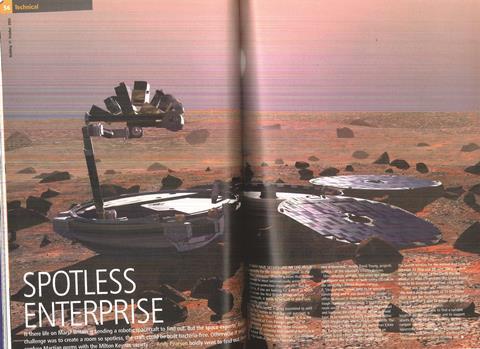The projects shortlisted for the Building Awards this year display the “very highest functionality and aesthetics” but it is unlikely that even any of these had a design brief as specific as this build.

We note this week that the projects shortlisted for the Building Awards this year display the “very highest functionality and aesthetics” but it is unlikely that even any of these had a design brief as specific as this build, writes Helen Burch.
The team behind the Beagle 2 spacecraft, which was being built for a mission to Mars, needed to find a place to construct the space shuttle. Colin Pillinger, who was the instigator of the mission, was professor of planetary sciences at the Open University, and determined to use his institution for the purpose.
A “clean room” was required – a complex including a “changing room where staff could don protective suits; store rooms; preparation rooms, where sections of the craft will be sterilised to ensure they are bacteria-free before assembly; and a testing room.“ The most important room was where the spacecraft would be assembled.
This was to ensure that bacteria was not carried from planet to planet and ensure the scientific equipment used to look for evidence of existence was not contaminated.
“Now if Beagle 2 does discover evidence of life, they can be sure it did not come from Earth,” said our writer.
To read the full article from 11 October 2002, click on the
Downloads
This week in 2002
PDF, Size 9.24 mb



























No comments yet